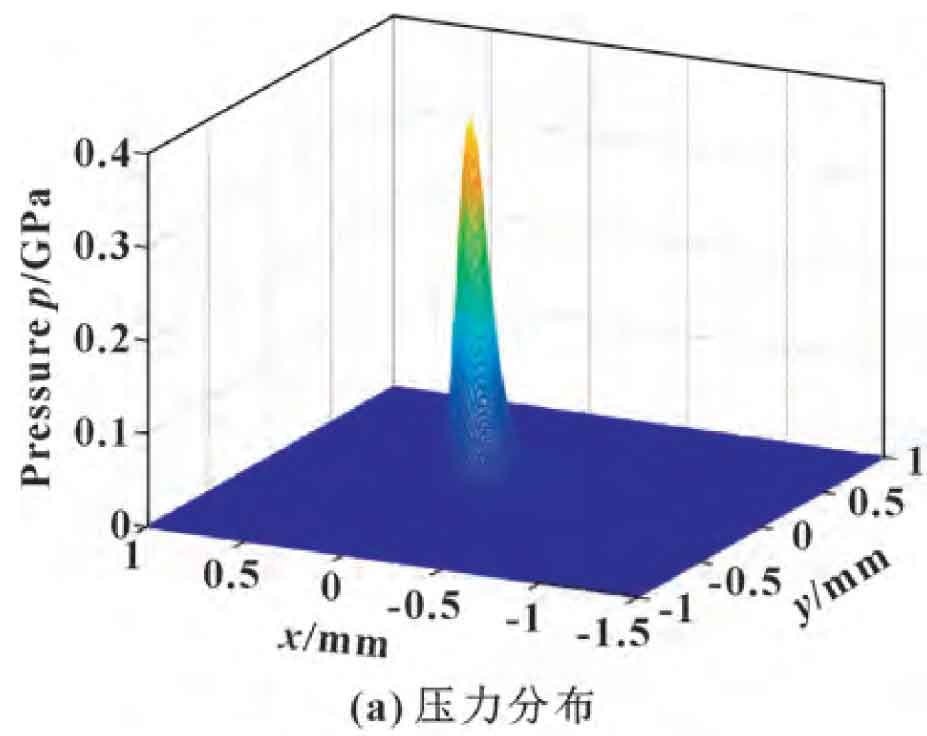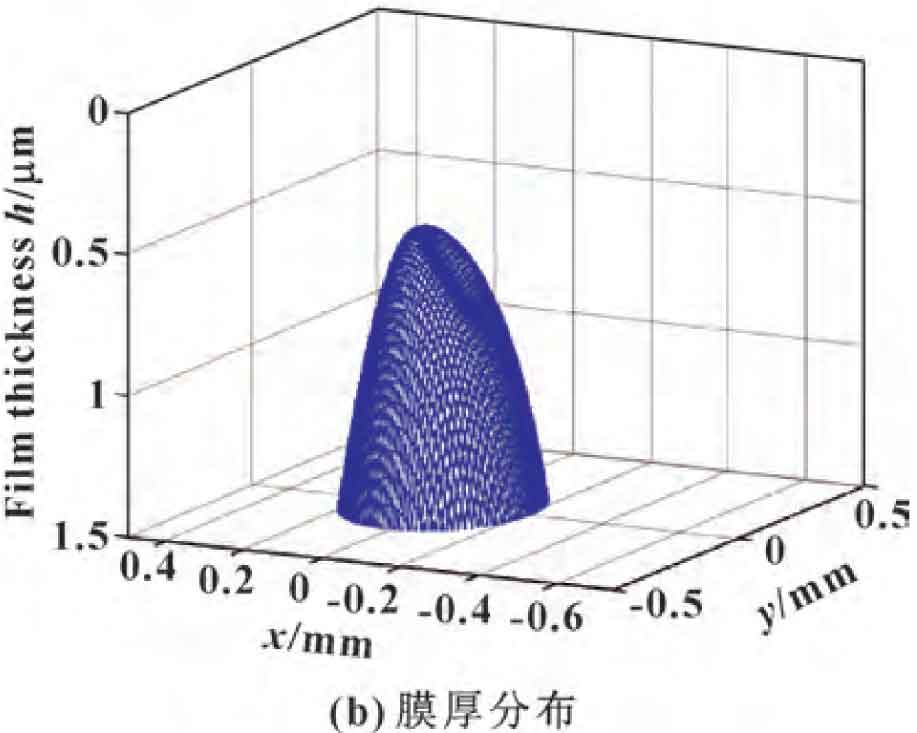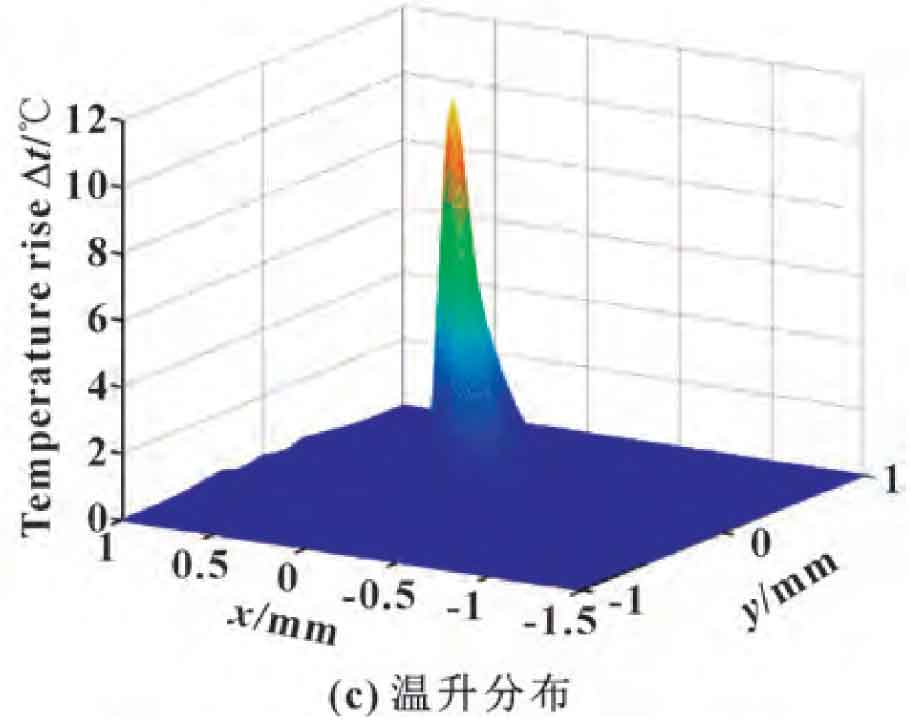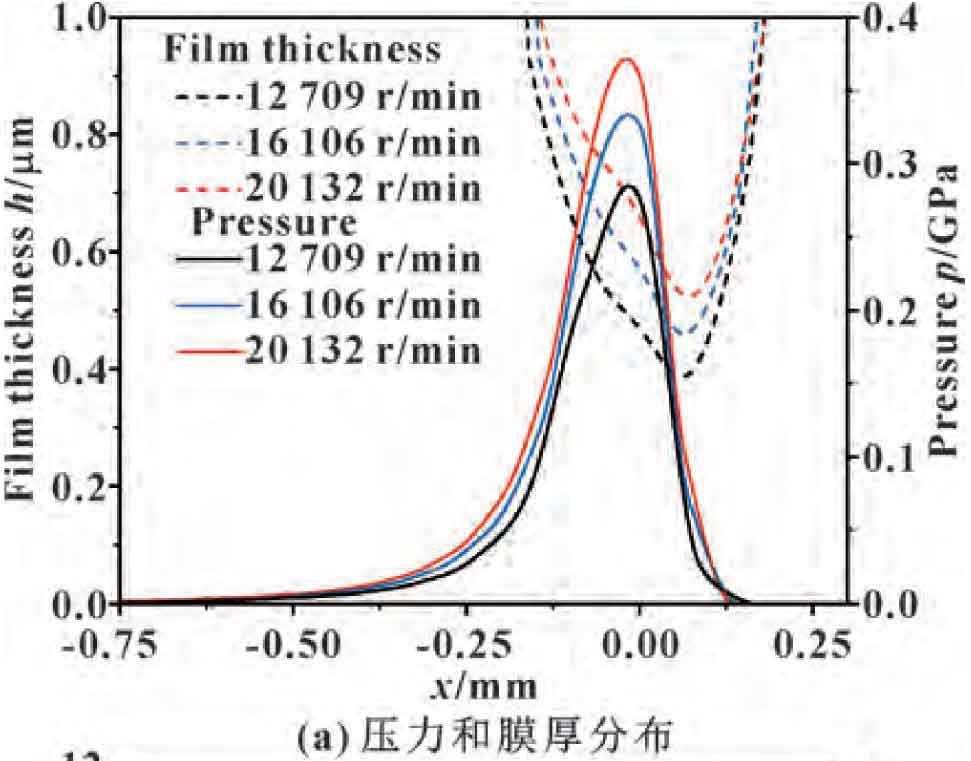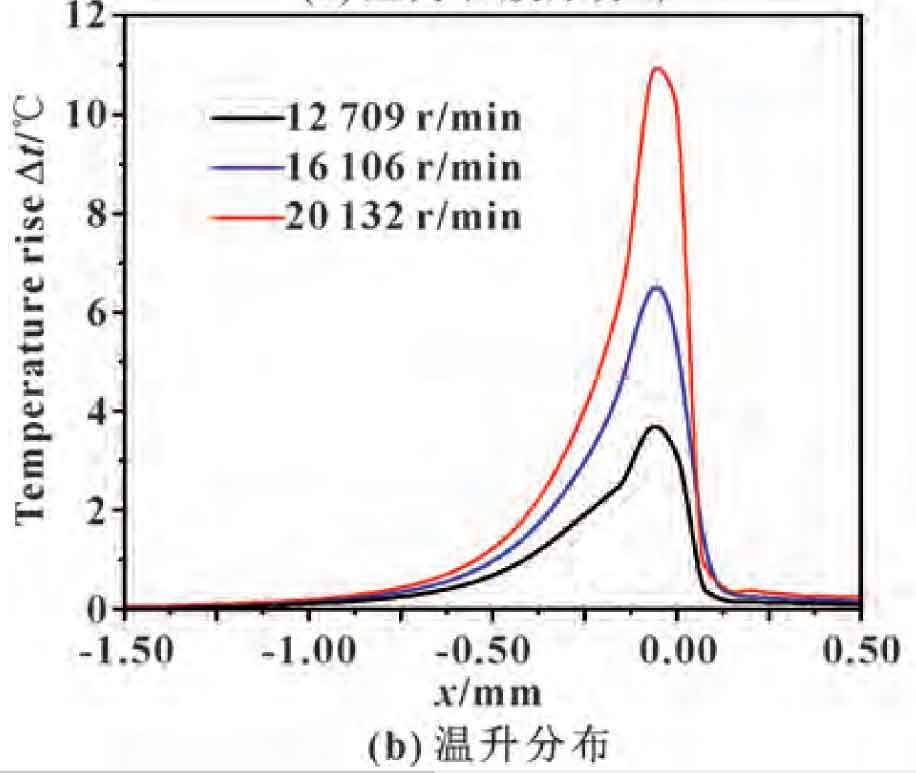Taking the driven cone as the research object, after the numerical calculation of the spiral bevel gear near the design point, it is found that the three-dimensional distribution of oil film pressure, thickness and temperature rise is basically similar. Therefore, taking the oil supply temperature of 140 ℃, power of 1000 kW and speed of 20 132 r/min at the design point as an example, the calculated pressure distribution, film thickness distribution and average temperature rise distribution at the pitch position are shown in Figure 1. In Figure 1 (a), there are no two pressure peaks that are common in EHL. This is because the secondary peak of pressure caused by oil film necking will move towards the meshing inlet and coincide with Hertz pressure peak due to higher rotating speed, and the phenomenon of flat central oil film is not significant, only slight oil film depression appears. During the meshing process of spiral bevel gears, the trend of oil film pressure and oil film temperature rise is similar, while the distribution of oil film thickness is opposite to the trend of pressure temperature rise. In order to facilitate the analysis, the two-dimensional profile curve (y=0) and characteristic parameters of oil film feature distribution are extracted from the calculation results to compare the maximum pressure, minimum film thickness and maximum temperature rise.
| N/(r·min_;1) | hmin / μm | pmax /GPa | Δtmax /℃ |
| 12 079 | 0.402 | 0.277 | 3.581 |
| 14 092 | 0.432 | 0.303 | 5.161 |
| 16 106 | 0.463 | 0.327 | 6.640 |
| 18 118 | 0.494 | 0.349 | 8.855 |
| 20 132 | 0.524 | 0.369 | 10.829 |
When the power of the fixed bevel gear is 1000 kW, the lubrication characteristics of the meshing area are studied at 60%, 70%, 80%, 90% and 100% of the design point speed (expressed in No), and the working condition of 60% of the design point speed is the idle state of the engine. The two-dimensional contour curves of oil film pressure, oil film thickness and oil film temperature rise are shown in Figure 2 when the speed is 60%, 80% and 100% of the design point speed respectively. Maximum oil film pressure (p), minimum oil film thickness (h) and maximum temperature rise under all working conditions( Δ t) The changes of are shown in Table 1. As shown in Figure 2, when the power is fixed, the oil film pressure, oil film thickness and oil film temperature rise of spiral bevel gear will increase with the increase of the rotating speed of spiral bevel gear. The rotating speed will increase by 66 7%, the minimum oil film thickness increased by 30 4%, the maximum pressure increased by 33 4%, the maximum temperature rise increased by 202.2%. The increase of rotating speed at the power of fixed spiral bevel gear will lead to the decrease of torque and reduce the contact load. The pressure in Table 1 will increase with the increase of rotating speed. This is because the peak value of secondary pressure caused by the dynamic pressure caused by high rotating speed and the phenomenon of oil film necking is far greater than the first peak value caused by contact pressure. Comparing the idle working condition (12709 r/min) with the design point working condition (20 132 r/min), when the speed drops and the contact load rises, the second peak of pressure can be seen to drop and move towards the meshing outlet, making the first peak generated by the contact pressure gradually appear. It can be seen from Figure 2 and Table 1 that the temperature rise and pressure change trend are similar. With the increase of the spiral bevel gear speed, the oil film temperature rise also gradually increases. Higher pressure and higher speed will bring greater heat generation, so the higher temperature rise also appears at the second peak of pressure.
According to Table 1 and the formula, the corresponding sensitivity coefficient of each oil film characteristic parameter when the speed changes is shown in Table 2. It can be seen that the sensitivity coefficient of the minimum film thickness is relatively stable, and the sensitivity coefficient of the maximum pressure is decreasing slightly. Therefore, the speed can be used as an important parameter to adjust the minimum film thickness and the maximum pressure, and the sensitivity coefficient of the speed to the oil film temperature rise is always greater than 1. Therefore, the change of the speed will have a greater impact on the temperature rise, which is a key parameter to change the oil film temperature rise. The impact reaches the maximum when the speed is 80% of the design point.
| Mk | 60%No | 70%No | 80%No | 90%No | 100%No |
| hmin | 0.583 | 0.587 | 0.585 | 0.578 | — |
| pmax | 0.627 | 0.598 | 0.573 | 0.547 | — |
| Δtmax | 1.673 | 1.745 | 1.934 | 1.823 | — |

